Alpacas are among the most adorable animals there are. With their small faces and poofy appearance, they possess a certain charm compared to other mammals in the camelid family.
And the fact that they have an affectionate temperament makes them even more lovable. But as adorable as they are, they also need proper grooming like all other animals. And that leads to the question about trimming their toenails.
At most, an alpaca’s toenails should be trimmed at least once every six months. However, this is considering the active younger alpacas whose toenails go through regular wear and tear from their daily activities. For older alpacas, you may need to trim their nails once every six weeks.
Nonetheless, you should also consider how fast an alpaca’s nail grows. Some alpacas grow nails faster than others, so you have to keep an eye out for signs when they need trimming. And lucky for you, you’ll learn all about that in this article.
Signs That It’s Time to Trim Your Alpacas
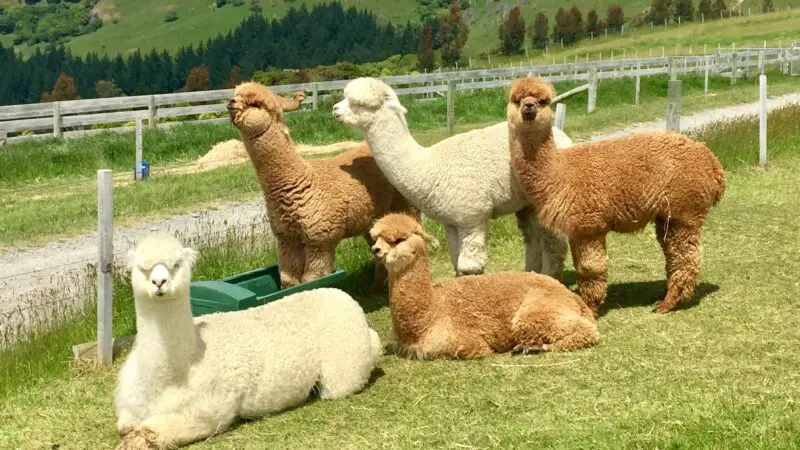
Alpaca toenails grow at different rates. As such, giving them a trim once every six months is merely a general estimation. For those with nails growing faster than others, you may have to look for signs to help you determine when it’s time to give your alpaca a trim.
- Nails growing beyond the foot pad. The earliest sign that it’s time to trim your alpaca’s toenails is if the nails start growing beyond its soft footpad. A rule of thumb is that if the nail is longer than ⅛ inch from the base of the footpad, you should start trimming the excess.
- Curling toenails. Another tell-tale sign that it’s time to give your alpaca a trim is if its toenails start curling inwards. When this happens, you should trim its nails as soon as possible. Curled toenails often pack up a lot of dirt, which can lead to an infection.
- Nails growing and spreading sideways. When an alpaca’s nails start growing and spreading sideways, that is a sure sign that its nails are already too long. This can cause quite a discomfort for your alpaca, so you have to trim them as soon as possible.
- Alpaca is having difficulty walking. Even without looking directly at your alpaca’s feet, you can tell that their toenails need trimming if they seem to have difficulty walking. This means that they are already in pain and need immediate trimming.
What to Do Prior to Trimming?
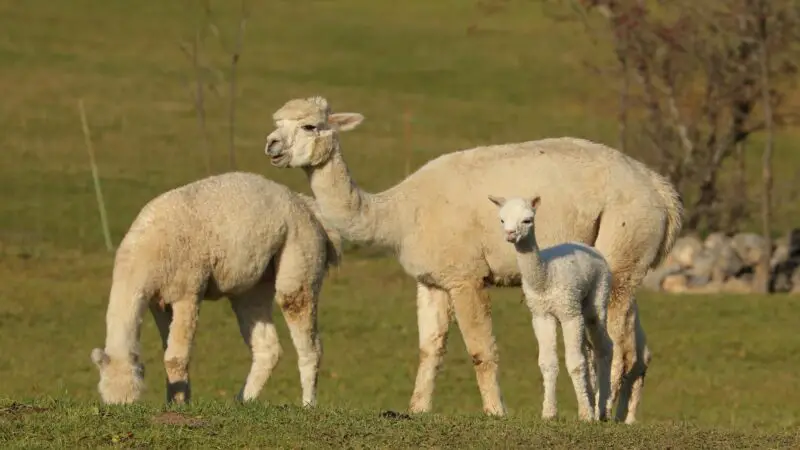
- Create a trimming schedule. Having a trimming schedule allows you to set a time and date when it’s best to cut your alpaca’s nails. But before doing so, observe how fast their nails grow and create your schedule based on your observation.
- Clean the toenails. Working with clean alpaca toenails helps you determine which parts to remove and prevents an uneven cut. This also ensures that you won’t cut the footpad accidentally. To do so, simply use a brush to clean off any dirt or debris from their feet.
- Make sure your toenail trimming tool is clean. Always make sure you use a clean trimming tool before cutting your alpaca’s toenails. You can do so by disinfecting it with soapy water. This extra step ensures that your alpaca won’t get any infection from a dirty or rusty trimming tool.
- Wear protective gear. For your protection, you should use protective gloves and eye goggles as you trim your alpaca’s toenails.
- Place the alpaca on a harness. Having their toenails trimmed is not an alpaca’s favorite activity. You may experience resistance from them, especially if it’s their first time doing so. In this case, it’s best to have them on a harness to keep them from moving too much – and so you don’t accidentally cut their foot pad.
- Make sure the alpaca is calm. Whether or not the alpaca is placed in a harness, make sure that it is already calm before you start trimming. Doing so when they are not yet calm will only cause them stress. As a result, they may associate toenail trimming with being stressful, which will only create a problem for every toenail trimming session.
- Do not hesitate to ask for help. If you’re having difficulties with trimming your alpaca’s toenails, do not hesitate to call a veterinarian and have them do it for you. Veterinarians are professionals trained to groom animals, so they know exactly how to treat your alpaca’s nails.
What to Use in Trimming Alpaca Toenails?
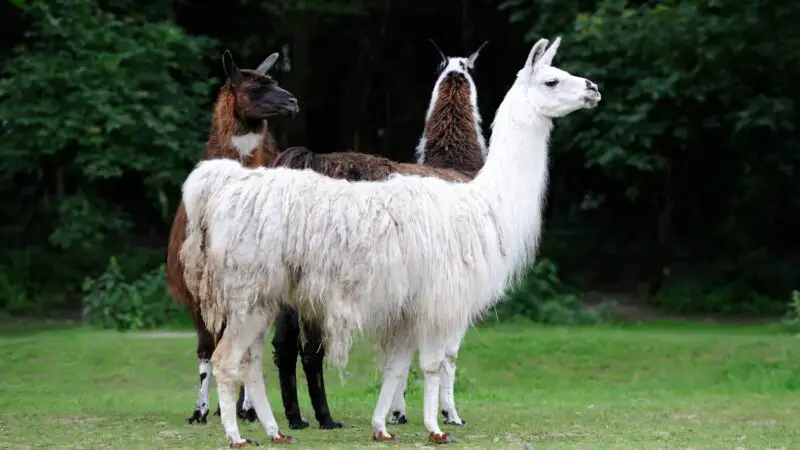
To make sure you accurately trim your alpaca’s toenails – and do so safely – the best tool to use is a shear-type toenail clipper. Shear-type clippers will give you a comfortable grip while being able to cut through the W-shaped alpaca toes.
A good trimming tool to consider is the Hongmei Outdoors Trimming Shears. Aside from its stainless steel blade, this clipper has a curved handle and a wrist strap to ensure a firm grip for efficient toenail clipping.
How Much Toenail to Cut Off?
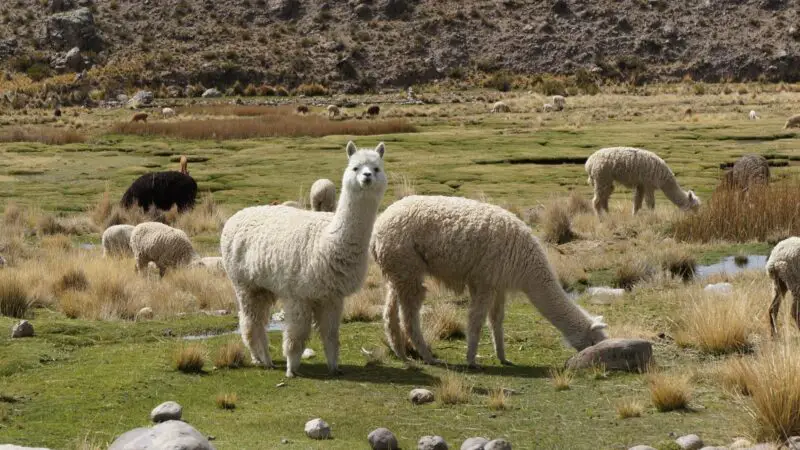
A big part of cutting an alpaca’s toenail is knowing where you should stop trimming. The rule often observed is that you should leave around ⅛ of an inch from the soft footpad. Going beyond the ⅛-inch line can cause bleeding and discomfort to your alpaca.
How Often Should You Trim Alpaca Hooves?
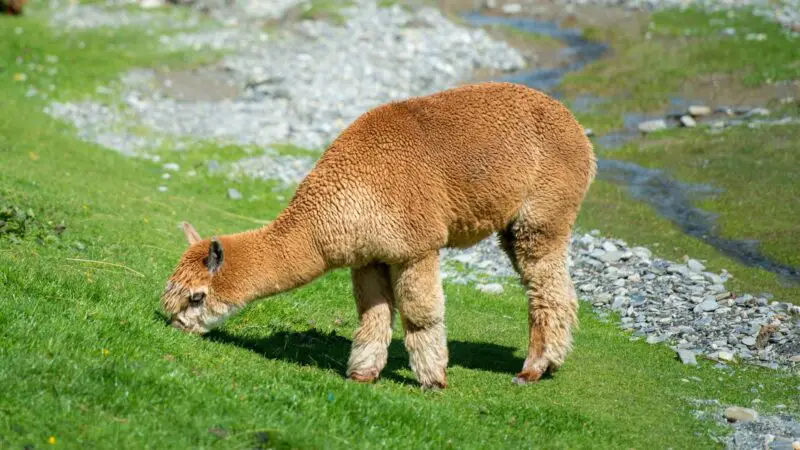
As a general rule, an alpaca’s toenails should be cut once every four to six months. However, you should bear in mind that an alpaca’s toenails grow at different speeds. Because of this, some alpacas may need more frequent trimming than others.
Another factor to consider is how active the alpacas are. Young alpacas are quite active, which causes their toenails to grow slower due to frequent abrasion from the ground. In contrast, older alpacas that are not as active may need to have their nails trimmed more frequently.
Tips in Trimming Alpacas’ Toenails
For best results, clean the alpaca’s toenails first before trimming. Bear in mind that an alpaca’s toenail often collects dirt and debris off the ground. As such, it’s hard to tell where the footpad starts. Thus, it’s best to brush off the debris to help you see where you should start trimming.
In the case of an uncooperative alpaca, you can trim them only once it is in a harness or tied down. Having an alpaca in a harness helps you trim its nails without them being fussy about it. This is why some alpaca farmers prefer to trim their alpaca’s nails when they are tied down for shearing.
Water the toenails down after trimming them. Once you’re done trimming your alpaca’s toenails, you should clean the area by watering it down. This helps you determine whether you need to trim further, while also getting rid of any dirt that may cause infection.
Observe the ⅛-inch distance from the soft footpad to the nail. The part of the toenail closest to the alpaca’s soft footpad already has blood vessels and nerves. Thus, cutting too close to the footpad may cause bleeding and pain for your alpaca. As a rule, maintain a nail length of at least ⅛ of an inch from the footpad.
Always check their toenails whenever. To prevent your alpaca’s nails from growing too long, it’s best to check their toenails whenever you get the chance. This will help you detect the signs and prevent the nails from curling over.
What to Do if You Trimmed Alpaca’s Nails Very Unevenly?
If it’s your first time trimming your alpaca’s toenails, then it’s common to have them trimmed unevenly. It takes a while to perfect toenail trimming – especially considering its unusual shape. In this case, you don’t have to worry about any unevenness as long as there’s no bleeding.
However, in case you trimmed an alpaca’s nails very unevenly and cut beyond the ⅛-inch safe zone between the nail and the footpad, you should take the alpaca to the veterinarian immediately.
Apart from the infection from the open wound, this can also cause mobility issues for your alpaca. Thus, immediate veterinary intervention is advised.
Like all animals, alpacas also need regular grooming. Aside from shearing their wool, their toenails also need regular trimming so that they can walk comfortably.
Fortunately, there are tell-tale signs when their nails need trimming. As long as you keep a close eye on your alpacas following the tips in this article, then you have nothing to worry about.
